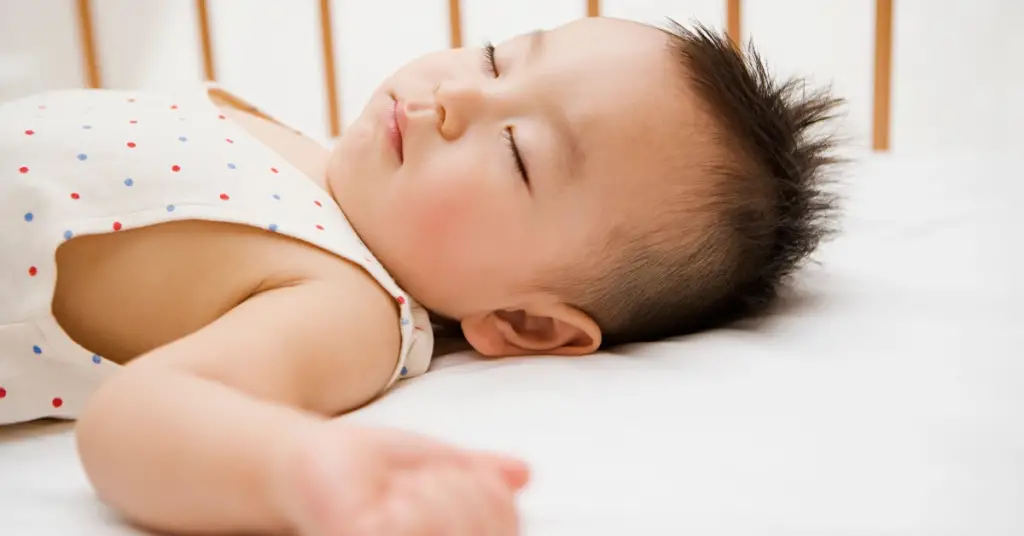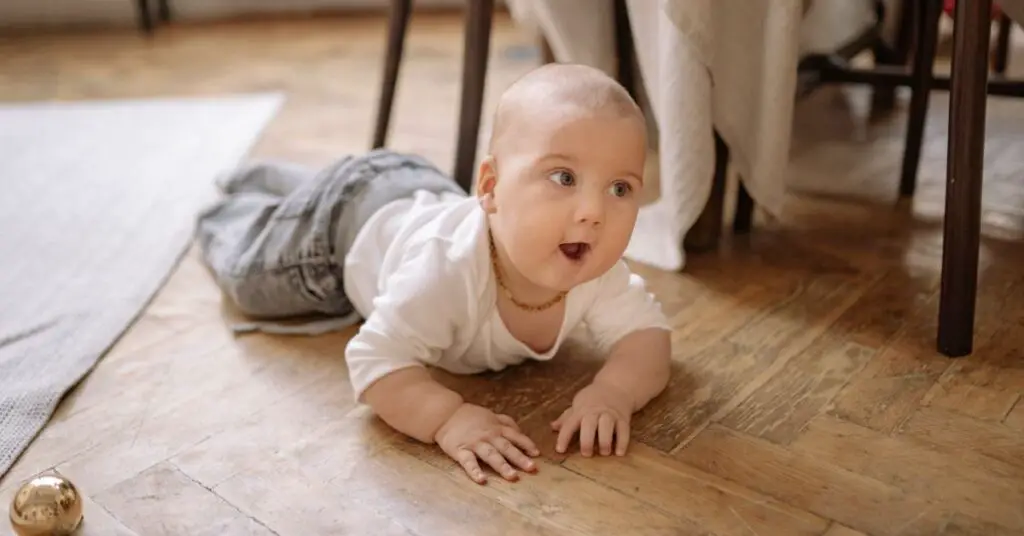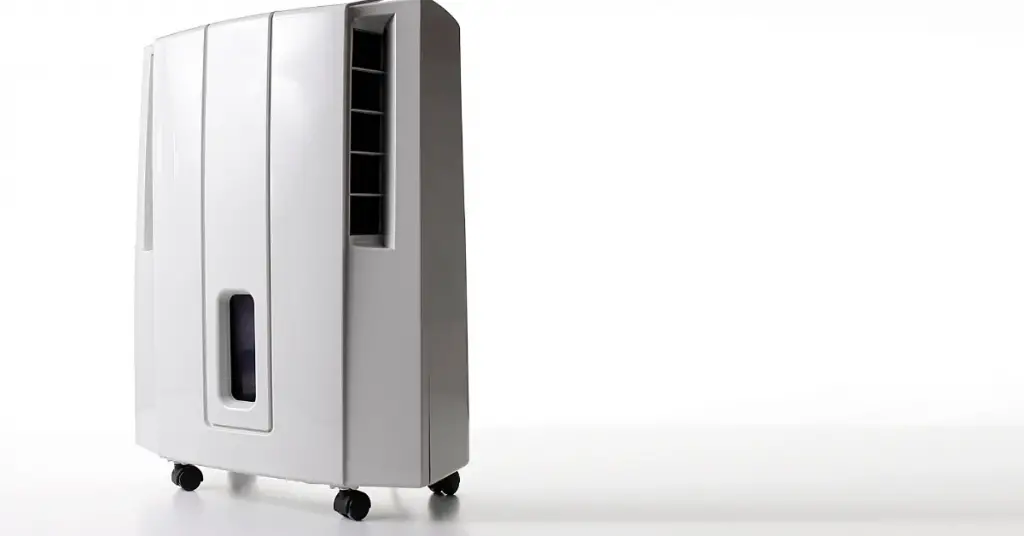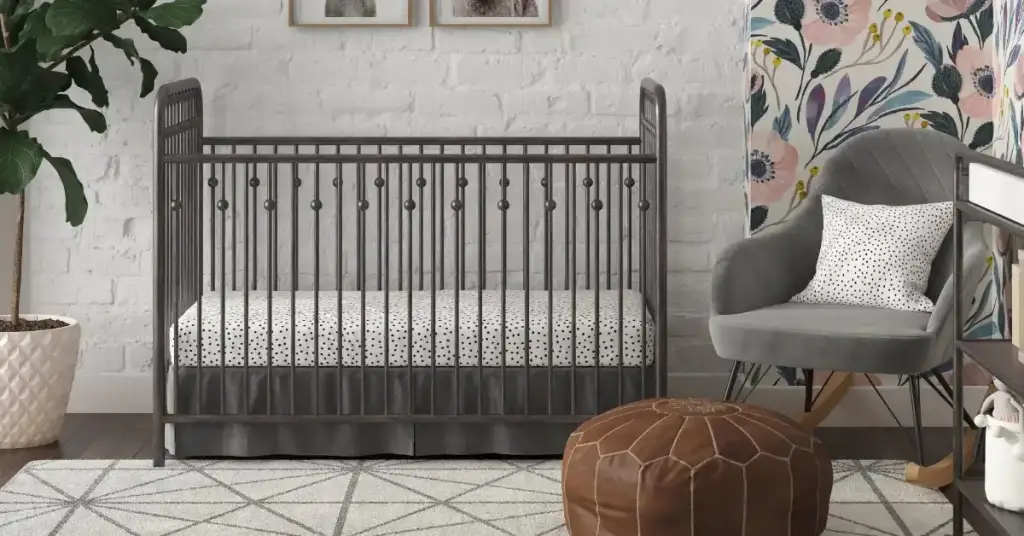Wondering when to lower crib mattress height? Here are different situations you should consider it for!
The products mentioned on this page were independently selected by Babycious editors. As an Amazon Associate, Babycious may earn a commission from qualifying purchases.
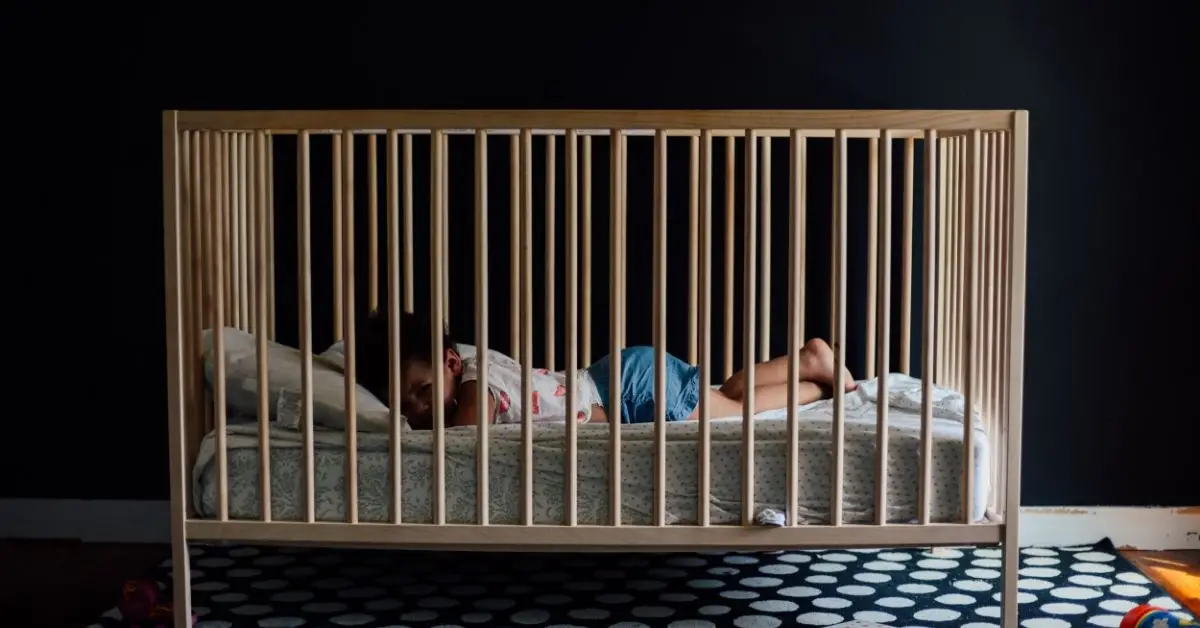
Photo by Emma Bauso
The first year of your baby’s life is filled with momentous growth and milestones. Your baby is growing and evolving into their own little person, and adjustments need to be made with each milestone you celebrate. One of them is deciding when to lower crib mattress height. This decision should not be taken lightly, as there are many factors that need to be considered.
Many parents wonder if they should wait until their baby can roll over or sit up before making the change. In this blog post, we will discuss different situations when you should consider lowering the crib mattress height. Keep reading for more information on crib levels!
Why It’s Important to Lower the Crib Mattress Height
The reason why you need to lower the crib mattress height is that it can be dangerous for your baby if they are able to climb out of their crib. This could lead them to fall from a high place which would cause serious injuries or even death in some cases.
In a study published by the American Academy of Pediatrics (AAP), researchers examined injuries associated with cribs, playpens, and bassinets among young children in the US from 1990 to 2008. They found that most of the injuries that led children younger than 2 years of age to the ER in the US over the 19-year study period involved cribs!
The most common cause of injuries and death was children falling out of their cribs, especially when they were trying to climb up or down. This is why we recommend lowering the mattress height as soon as your baby can pull themselves up on their own and stand in the crib unassisted (this happens around 9 to 12 months old).
How to Choose the Right Height Setting for Your Crib
Choosing the correct height setting for your baby’s crib depends on many factors, including the age of your child, their developmental milestones, and the type of crib you have.
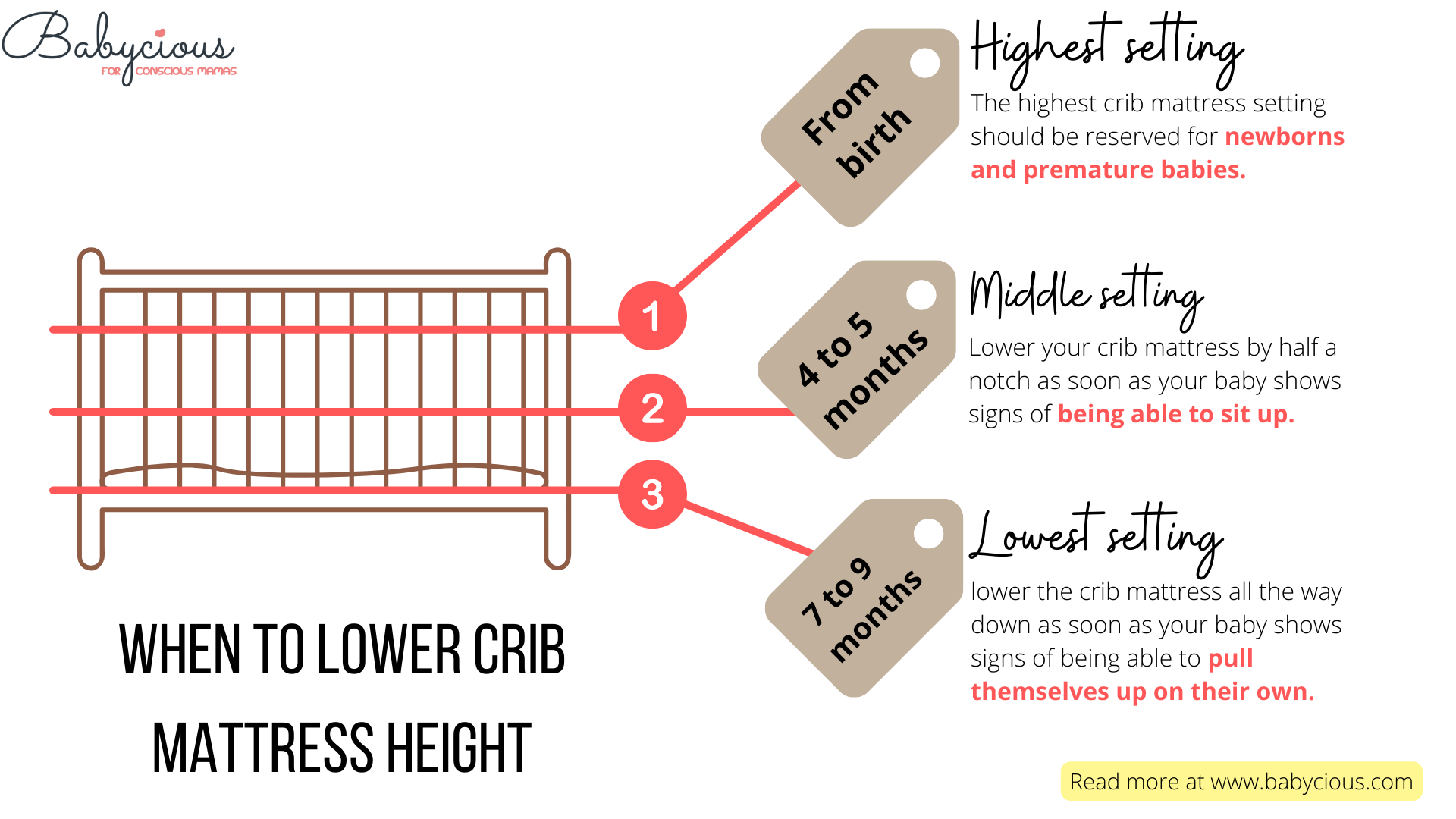
Generally speaking, most parents lower their crib mattress height between 7-12 months old. This is when most babies learn how to pull themselves up on their own and stand in the crib.
When to Choose the Highest Crib Mattress Setting
The highest crib mattress setting should be reserved for newborns and premature babies. This setting is the tallest and allows for less space between the crib mattress and the crib’s edges.
This mattress position will be the most convenient in the first months of life, as you will not have to bend far to put your baby down to sleep or pick them up. This is so important when you are still recovering from your baby’s delivery or if you are dealing with some back pain issues.
It is essential to keep in mind that as your baby grows, they will outgrow this setting quickly.
When to Choose the Middle Crib Mattress Setting
Rather than giving you a particular age for when to lower the crib mattress, we recommend that you watch for your baby’s developmental milestones.
To be safe, you should lower the crib mattress height by half a notch as soon as your baby shows signs of being able to sit up so that your baby is not at risk of rolling out of their crib accidentally.
That being said, most babies will start gaining more control over their body movements around 4 months. They usually begin by lifting their head without support and doing mini push-ups during tummy time to actually rolling over by rocking their body from side to side.
When to Lower Crib to The Lowest Crib Setting
You wouldn’t wait for your baby to actually stand up on their own to lower the crib mattress all the way down.
You should consider lowering the crib mattress all the way down as soon as your baby shows signs of being able to pull themselves up on their own. This typically happens around 9 to 12 months.
This will keep your baby safe while giving them enough room to move around freely within the confines of the crib sidewalls. Keep in mind that at the lowest crib setting, and according to the US federal regulations, the distance between the mattress and the edges of the rails should be no less than 20 inches.
When to Transition from Crib to Toddler Bed
The US federal crib regulations require parents and caregivers to stop using the crib once the baby reaches the height of 35 inches, as the crib no longer provides an escape-resistant environment for the baby.
According to the growth charts developed by the Centers for Disease Control and Prevention (CDC), both baby girls and boys may reach the height of 35 inches towards the end of their second year and during their third year at the latest. So you need to consider moving your baby into a toddler bed between the age of 18 to 24 months old.
In addition to the age cue, here are other signs that say it’s time to ditch the crib for a safer toddler bed:
Sign #1: Baby Is Able to Climb out Of the Crib Easily.
In case you have a particularly agile baby, you might want to move them into a toddler bed sooner so that they cannot climb over the rails while unattended. Accidents related to falling from cribs are a severe issue that must not be taken lightly, even if you have carpeted floors.
Sign #2: Your Baby Is Potty Trained
If your baby no longer wears diapers, they will need to get out of the bed and go to the toilets whenever they need to go! If they are in the crib, they might not get your attention in time to help them get out safely of the crib, which could lead to unpleasant situations.
Sign #3: A New Sibling Arrives!
This is a very common situation. If you need the crib for the new baby, then you might need to advance the transition of the oldest baby to a toddler bed. In this case, we recommend that you start the transition from the crib at least two months before the new sibling arrives to give your child enough time to adjust to the new sleeping arrangement and lessen any friction or jealousy that may arise with the arrival of a new sibling. By the time the new baby arrives, your child will have started viewing the crib as just a piece of furniture in the house rather than his sleeping spot.
How to Lower the Crib Mattress Height
Once you have decided on the appropriate crib mattress height for your baby, follow these steps to adjust the height of your crib to the desired position:
Step #1: Remove the Mattress
Before you start actually adjusting the height setting of your crib, it’s better to take off the mattress along with the sheets, so they don’t get ruined.
Step #2: Loosen the Crib Rail Knob
Now you need to loosen the rail on your crib by loosening the knob on it. You can use a flat-head screwdriver or coin to turn it until it starts turning freely. Keep in mind that you only have to loosen the knob, not remove it entirely.
Step #3: Raise or Lower the Crib Frame
To raise or lower the height setting of your crib, you’ll need to use the rail knob that you’ve already loosened. Simply turn it clockwise until it starts turning freely. Then pull out at least 15 cm- 18 cm ( 6 inches – 7 inches ) from the end of the rail. It should rest in the highest position of your crib. Now turn it counter-clockwise to lower the height if you wish to do so. To raise the height setting, pull out more than 18 cm ( 7 inches ) from the end of the rail. Then turn it clockwise until it starts turning freely and locks into place with a ‘click’.
Step #4: Tighten the Crib Rail Knob and Put the Mattress Back On
Once you’ve raised or lowered your crib to the desired height setting, tighten the rail knob once again by turning it clockwise. Then place the mattress back onto the crib slats and put your baby’s crib sheets back.
Here’s a video that shows in detail how to lower a crib :
Tips for Safe Crib Sleeping
We cannot stress enough the importance of following the safe sleeping recommendations from the AAP (American Academy of Pediatrics). Regardless of the sleeping arrangement, you have set up for your baby, it is extremely important that you read through these guidelines in order to ensure your baby’s safety.
Tip #1: Room Share but Don’t Bed Share
Room sharing has benefits, but be aware of co-sleeping risks. Parents who put their baby to sleep in their bed often believe this will help them respond more quickly if their child needs anything during the night, but they don’t always realize that the risk of SIDS is actually higher in these cases.
Tip #2: Place Your Baby on Their Back to Sleep
Babies should always be placed on their back to sleep. This is the safest position for your infant to sleep and will significantly lower their chance of suffocating or dying from SIDS. It also helps reduce the risk of choking, ear infections, and other problems related to reflux issues.
Related: How To Put Baby In A Lowered Crib: 7 Simple Hacks
Tip #3: Use a Firm Mattress
It is best to use a firm mattress. The crib mattress should be firm enough to support your baby’s weight without letting them sink in it. To see if your crib mattress is firm enough, check for indentations in the area where your baby’s headrests.
Crib mattresses should meet strict safety guidelines set by the Consumer Product Safety Commission. It is important that you purchase a crib mattress that was made after 2010.
It is also important to use a fitted sheet that fits snuggly on the mattress and avoid anything that bunches up around your baby’s face.
Tip #4: Keep the Crib Uncluttered
You may be tempted to decorate your baby’s crib with soft bedding and plush toys, but we strongly advise against it.
Avoid using fluffy blankets and pillows in the crib as well as they can pose a risk of suffocation or SIDS. Keep the room well ventilated and allow for adequate air circulation in order to avoid suffocation issues, too.
Conclusion
Now that you know everything about when and how to lower your baby’s crib mattress height, make sure you follow the safe sleeping recommendations no matter the sleeping arrangement you have set up for your baby. And tell us in the comments about your own experience with crib mattress height adjustment. Also if you have any questions still unanswered be sure to leave them in the comments or get in touch with us. We’re always happy to help!
The purpose of this article is informative and educational only. It’s not a substitute for medical consultation or medical care. We do not accept any responsibility for any liability, loss, or risk, personal or otherwise, incurred as a consequence, directly or indirectly, from any information or advice contained here. Babycious may earn compensation from affiliate links in this content.
